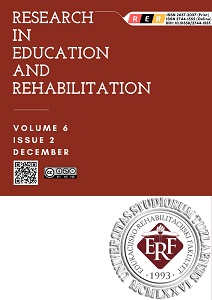Diagnostic and Intervention Program for the Prevention of Behavioral Disorders in Children and Adolescents in the Area of FBiH
Diagnostic and Intervention Program for the Prevention of Behavioral Disorders in Children and Adolescents in the Area of FBiH
Author(s): Lejla Kuralić-Čišić, Adela Čokić, Džana SultanićSubject(s): School education, Developmental Psychology, Behaviorism
Published by: Edukacijsko-rehabilitacijski fakultet Univerziteta u Tuzli
Keywords: Behavioral disorders; interventions; children; adolescents; parents; prevention programs;
Summary/Abstract: Educational institutions record an increase in behavioral disorders in children and adolescents every day, with severe symptoms that result in hospitalization or the imposition of criminal sanctions for juvenile delinquents. Behavioral disorders of children and young people stand out as one of the primary problems of today's society. The purpose of this paper is to give a detailed insight into the state of emotional and behavioral disorders, from those that are hidden such as withdrawal, apprehension, fear, anxiety to behavior that children and young people come into conflict with others, even committing acts that are legally recordable as punishable. It has been proven in various studies that early diagnosis and preventive interventions in working with children give the best results. The hypothesis that behavioral disorders and emotional problems among children and young people in primary and secondary schools are present and require the application of appropriate preventive and treatment programs has been confirmed. Through the presentation of modern approaches to the detection, prevention and diagnosis of behavioral problems, this work shows the relationship between biological factors, parental qualities, education, the influence of peers, school and social norms, and the way in which they become risky for the development of problematic behavior. Detecting risk factors and stopping the action of risk processes, which have been proven to have a positive correlation with the occurrence of aggressive behavior in children, leads to a decrease in the rate of its occurrence. It has been observed that there are several successful ways of working with children that result in a reduction in the rate of behavioral disorders, even in provoking situations. Communication and problem-solving skills training can successfully reduce inappropriate child behaviors. Teaching social-emotional skills, in addition to reducing behavioral disorders, also results in higher self-esteem and more positive attitudes in children. Schools have a need for continuous implementation of science-based prevention programs that include interventions aimed at children and work with parents
Journal: Research in Education and Rehabilitation
- Issue Year: 6/2023
- Issue No: 2
- Page Range: 243-266
- Page Count: 24
- Language: English

